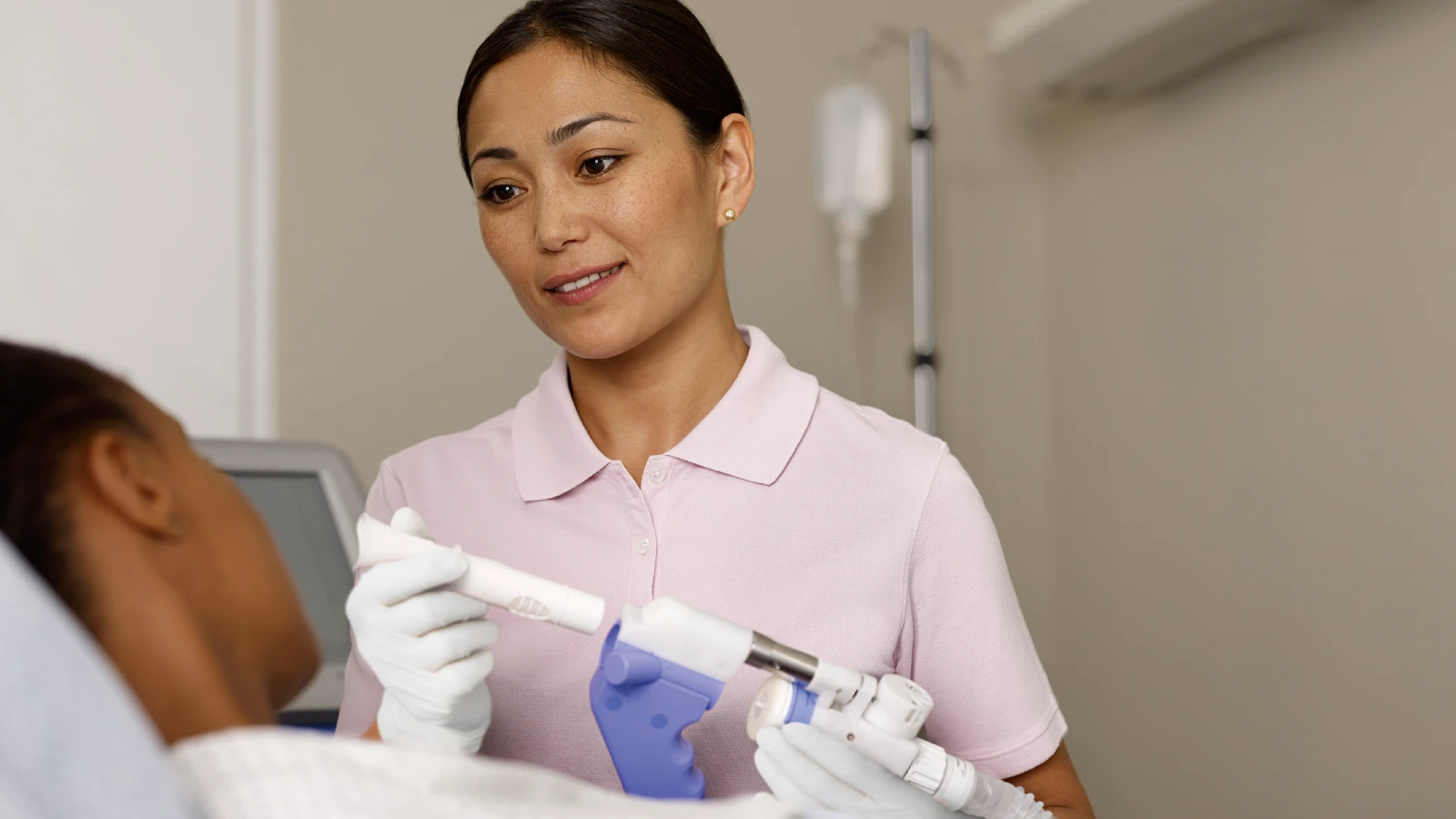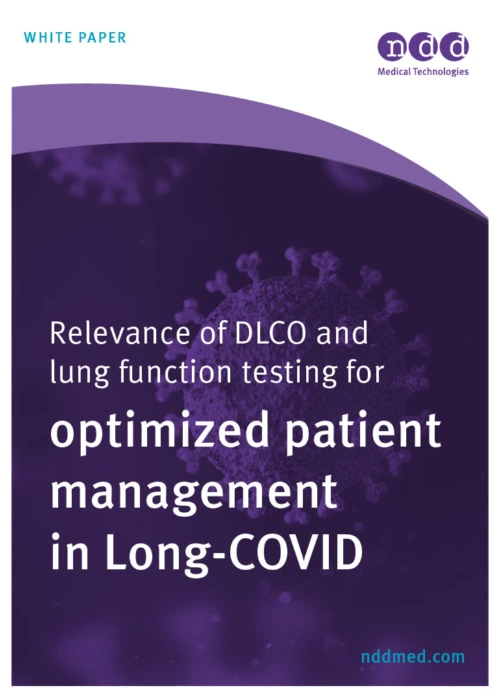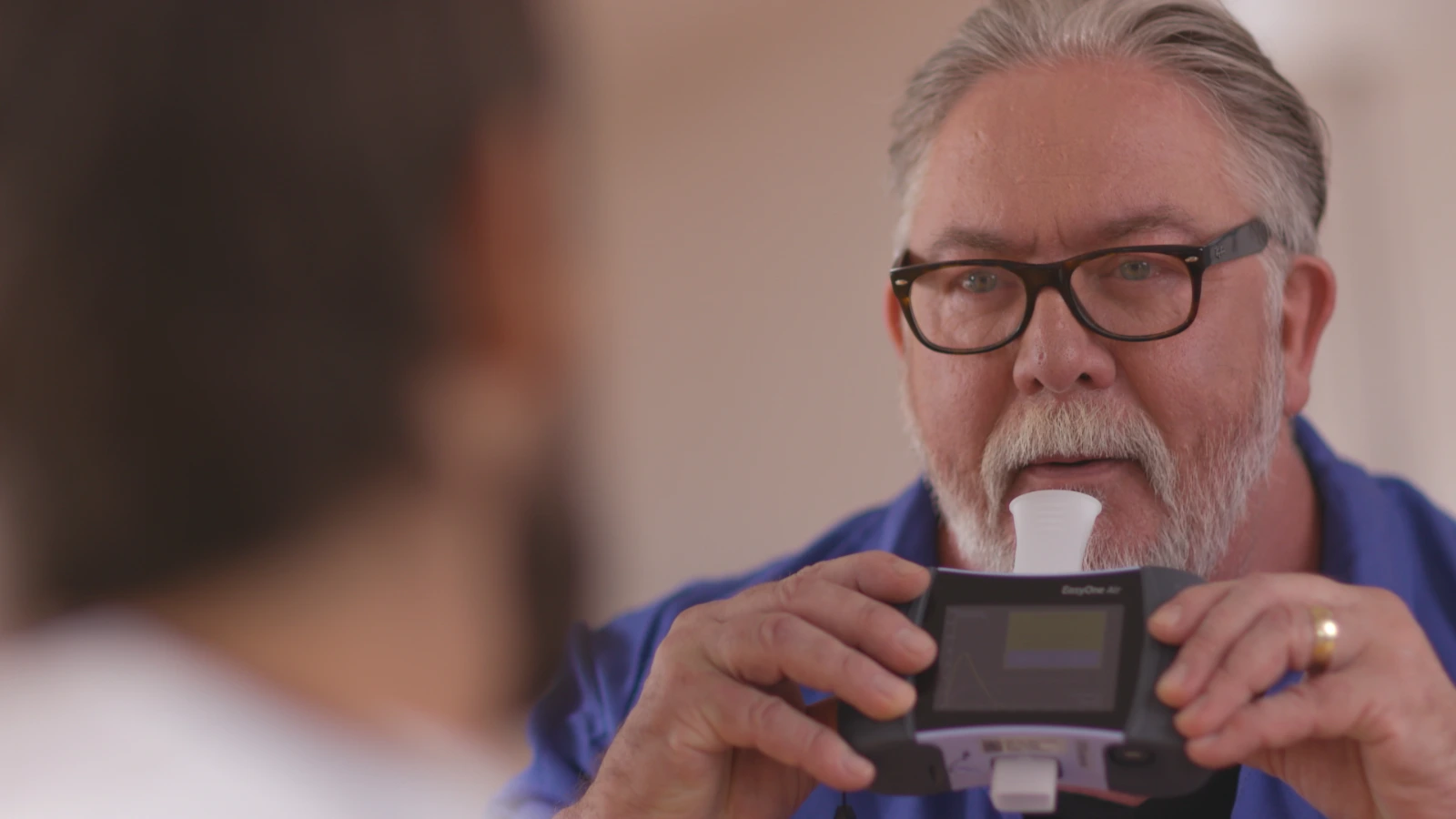Managing long-COVID with DLCO

Many of the news stories and epidemiological reports about the COVID-19 pandemic focus on the ever-increasing number of people we’ve lost to the disease. But these tragic stories overshadow a potentially even greater impact on society: The care for those who survive.
It’s not particularly uncommon for someone who has even a relatively brief stay in an intensive care unit to endure long-lasting effects on their lung condition. But as the pandemic has worn on and researchers learn more about the SARS-CoV-2 virus, we continue to encounter more surprises about its effect on the body. One of the most recent surprises is that so-called ‘mild’ cases of COVID-19 may not have the dramatic, severe symptoms of those cases that land people in the hospital, but they may be just as likely to have long-lasting effects on the respiratory system. Cases of ‘long COVID,’ ‘COVID long-haulers,’ and ‘post-COVID syndrome’ are being reported and analyzed, and concerning trends are emerging.
Challenge #
Obviously, the lungs are the most common site for COVID-19 pathophysiologies to appear. The endothelial cells lining the airways are teeming with angiotensin-converting enzyme 2 (ACE-2), which appears to be the prime target for the SARS-CoV-2 virus1. This allows the virus ready access to the pulmonary vasculature, where it begins to wreak havoc. The lungs of post-COVID patients often show very distinctive changes to that vasculature, with disruptions to the epithelial cell membranes, signs of inflammatory changes, and various other damage2. These impacts tend to linger, as well. One study in Ireland found that shortness of breath, as well as non-pulmonary symptoms like fatigue, malaise, and ‘brain fog’ were common even two to three months after initial diagnosis3. In fact, nearly two-thirds of the study cohort reported that they had “not returned to full health”
Similar findings were published by the department of medicine at the University of Washington. This group followed 177 patients with confirmed COVID-19 for between 3 and 9 months, with roughly one-third of them reporting ongoing symptoms during later follow-up4. In fourteen of those cases, symptoms were still severe enough to affect their activities of daily living; nine of those patients had not even been hospitalized. That means that even relatively ‘mild’ cases of COVID-19 are indeed at risk for physical impairment.
Many of these symptoms, including fatigue and malaise, can still be traced back to SARS-CoV-2’s effect on the pulmonary vasculature. Changes in that vasculature inevitably change the way gases like oxygen and carbon dioxide transfer through the walls of the alveoli and into the bloodstream, and once again those changes can persist. Last year, an Austrian team found significant changes to diffusion capacity (DLCO) and airflow patterns after 100 days in one-fifth of their long-haul cases5.
These cases may well be the tip of the iceberg. Neither the University of Washington study nor the Irish one used pulmonary function testing in their protocols, and PFT data have been difficult to find. Labs have been under various infection-control restrictions throughout much of the pandemic, resulting in backlogs and chronic delays. Many view the testing itself as risky, suspicious of bioaerosols released during the intense breathing manoeuvres. And PFT staff have been either stretched to their maximum or reassigned to put their valuable respiratory care knowledge to use in other care venues. In some cases, basic office spirometry may be enough to identify restrictive patterns that are frequently associated with the development of the circulatory issues and fibrosis that are thought to be major contributors to post-COVID lung problems, but DLCO has quickly become the gold standard in evaluating these cases. CT scans may also help identify potential problems, but it is sometimes difficult to distinguish between things like early fibrosis and resolving inflammation, and in any case would still require separate care coordination.
Solution #
Fortunately, ndd can put these concerns to rest with cost-effective, user-friendly point of care DLCO solutions that can be implemented in any practice setting. In addition, ndd’s proven track record of quality and safety can make your infection control staff just as satisfied as your patients.
DLCO at the point of care #
ndd’s state-of-the-art EasyOne Pro series allows for the full gamut of pulmonary function testing with immediate results in virtually any environment of care. The EasyOne Pro was designed with portability in mind, allowing testing to go to the patient rather than the other way around. This allows for easy testing in the hospital without the risks involved in patient transport, as well as bringing testing on-site to your clinic or office. Delays in scheduling or care coordination can become a thing of the past, especially with the standard American Thoracic Society/European Respiratory Society (ATS/ERS) diagnosis decision tree integrated with the EasyOne Connect software included with every device, allowing you to initiate a plan of care immediately.
Extremely hygienic solution #
With infection control on everyone’s mind even outside the hospital, the EasyOne Pro is designed to keep patient and clinician safety at the forefront. The unique TrueFlow™ technology at the heart of our equipment provides extremely accurate airflow measurement while ensuring no exhalate comes into contact with any non-disposable component. In addition, inline viral filters are available to provide ultimate protection for your staff and patients. The EasyOne Pro also allows a higher patient throughput (+40%) without compromising on hygiene guidelines from ERS.
Highly accurate with lifetime stability #
While TrueFlow technology delivers consistent flow measurement without the need of calibration, the TrueCheck technology ensures correct gas analysis at all times and eliminates the need for manual gas-calibration.
The combination of TrueFlow with ndd’s TrueCheck gas analysis technology also ensures incredible accuracy of both airflow and DLCO measurements, both of which are essential to optimally manage not only your post-COVID patients, but those with any respiratory condition.
Each DLCO trial receives an automatic 5-point validation and linearization, removing common sources of errors in testing and making DLCO measurement accurate over the lifetime of the device. This is a vast improvement over other devices, which studies have found to be inaccurate as much as 25% of the time, even just after calibration6. These innovations allow you to be confident that PFT measurements will be stable and consistent over time, enhancing research and optimizing clinical decision-making. That stability also allows your staff to spend more time in direct patient care rather than performing cumbersome calibration routines.
In it for the long haul #
The more we learn about COVID-19, the more critical accurate DLCO measurements over time appear to be. DLCO allows an unparalleled view into the state of circulation within the pulmonary system and has the potential to be an early-warning indicator for post-COVID complications and any number of other respiratory conditions. In order to anticipate the public health burden of long COVID, as well as fully understand the needs of those people burdened with long-haul symptoms, PFT should be considered an essential testing strategy.
ndd’s EasyOne products allow today’s clinician access to rapid pulmonary function testing, from basic spirometry to more insightful DLCO measurements. This, in turn, enables the delivery of robust, accurate results with minimal labor and without complex and time-consuming calibration and setup routines. These machines are able to inform a patient’s care every step of the way, from diagnosis to long-term treatment. In addition, PFTs are also reimbursable through Medicare, Medicaid, and most private insurance carriers, adding an additional revenue stream that allows return on investment not in years, but in months or weeks (depending on patient volume). You know your patients are more than the sum of their parts; why not use a testing strategy that does, too?
To learn more, click on the ndd solutions below:
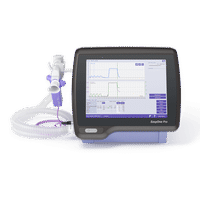
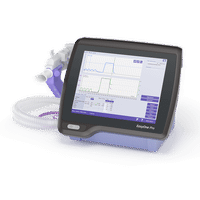
EasyOne Pro
Portable DLCO, Lung Volumes and Spirometry
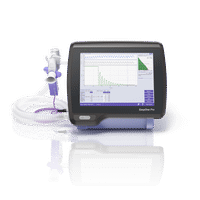
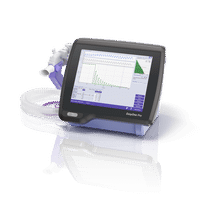
EasyOne Pro LAB
Portable DLCO, MBW, Lung Volumes, LCI and Spirometry
Cuervo NZ, Grandvaux N. Ace2: Evidence of role as entry receptor for sars-cov-2 and implications in comorbidities. Elife. 2020;9:1-25. doi:10.7554/eLife.61390 ↩︎
Provencher S, Potus F, Bonnet S. COVID-19 and the pulmonary vasculature. Pulm Circ. 2020;10(3):2045894020933088. doi:10.1177/2045894020933088 ↩︎
Townsend L, Dowds J, O’Brien K, et al. Persistent Poor Health Post-COVID-19 Is Not Associated with Respiratory Complications or Initial Disease Severity. Ann Am Thorac Soc. Published online 2021. doi:10.1513/annalsats.202009-1175oc ↩︎
Logue JK, Franko NM, McCulloch DJ, et al. Sequelae in Adults at 6 Months After COVID-19 Infection. JAMA Netw Open. 2021;4(2):e210830. doi:10.1001/jamanetworkopen.2021.0830 ↩︎
Sonnweber T, Sahanic S, Pizzini A, et al. Cardiopulmonary recovery after COVID-19 - an observational prospective multi-center trial. Eur Respir J. Published online December 10, 2020. doi:10.1183/13993003.03481-2020 ↩︎
Jensen R, Leyk M, Crapo R, Muchmore D, Berclaz PY. Quality control of Dl,co instruments in global clinical trials. Eur Respir J. 2009;33(4):828-834. doi:10.1183/09031936.00091208 ↩︎

